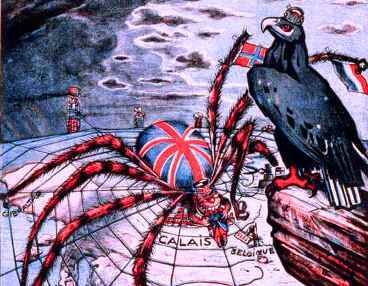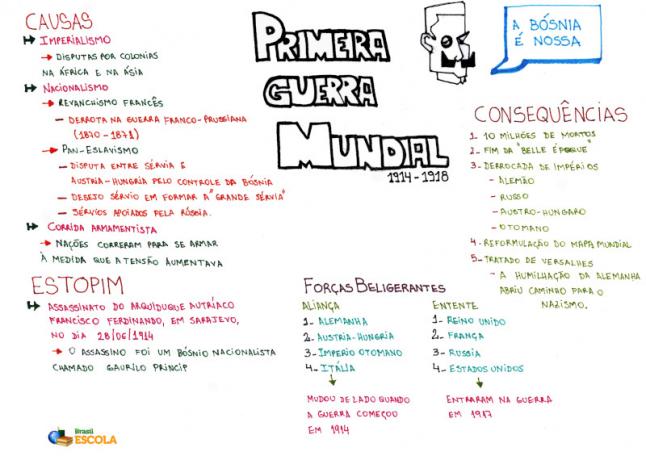With the development of the chemical industry in the 19th century, chemical weapons, which were not used recurrently in wars, began to be gradually tested. You toxic gases they currently rank as the most lethal chemical weapons and their use is expressly prohibited in wars, as they are weapons of mass destruction. The most notorious use of these gases, certainly, was during the battles of the First World War (1914-1918).
Toxic gases used in World War I
The main gases used in World War I were the chlorine gas, mustard gas and phosgene gas. Both the member countries of the Triple Alliance, such as Germany, and those that made up the Triple Entente, such as England, used these gases against their adversaries. The gases were fired at the trenches where the soldiers who were protecting themselves from the enemy artillery were kept. Throughout the war, various ways of launching them were employed. The main one was the production of gaseous clouds downwind that went towards the enemy trenches.
Attacks with toxic clouds produced different effects depending on the type of gas used. The most devastating was that of iperita-based gas or "mustard gas." It got its name from the spicy mustard smell it gave off. In addition to asphyxia and dryness of the airways, this type of gas also caused skin rashes, instant blindness and rupture of blood vessels, giving soldiers a misshapen appearance and monstrous.
The German chemist Fritz Harber (1868-1934), who won the Nobel Prize in Chemistry in 1918, was one of the main developers of the toxic gases used in World War I. With Harber as a scientific ally, the German army provided the history of wars with one of the most terrible scenes of mass deaths in the city of Yprès, Belgium. O n April 22, 1915, the Germans launched in this city about 22,000 cylinders containing 160 tons of chlorine gas against Allied troops. About 5,000 soldiers died in less than five minutes and another 2,000 perished days later from the side effects of the attack.
Do not stop now... There's more after the advertising ;)
The wearing of masks became customary among soldiers during World War I. However, the masks, made from a mixture of fabric and rubber and shatterproof goggles, limited soldiers' mobility in and out of the trench. This immobility favored the enemy artillery, since the soldier started to move around without the necessary precision to protect himself from the fire.
Prohibition of the use of chemical weapons
As we said, currently, the use of chemical weapons, as well as any type of weapons of mass destruction, is expressly prohibited by international conventions, supported by the UN. The main reasons for this prohibition are, in addition to mass destruction, the type of death caused, which will from asphyxia to complete deformation of the body, and the possible use of this type of weapon against the population civil.
* Image Credits: Shutterstock and Susan Law Cain
By Me. Cláudio Fernandes
Would you like to reference this text in a school or academic work? Look:
FERNANDES, Claudio. "Use of Toxic Gases in World War I"; Brazil School. Available in: https://brasilescola.uol.com.br/guerras/uso-gases-toxicos-na-primeira-guerra-mundial.htm. Accessed on July 27, 2021.
wars

Background to World War I, World War I, diplomatic agreements, race imperialist, arms race, Triple Alliance Treaty, Triple Entente, preparations for the First World War.
wars

Brazil in World War I, World War I conflicts, Triple Entente, cargo ships, German submarines, Spanish flu, Treaty of Versailles, indemnification.
wars
World War I, Great War, Battle of the Marne, War of Movement, War of Position, Trench War, United States, Russia, Germany, Woodrow Wilson, Armistice de Compiègne, Treaty of the Fourteen Points for World Peace.

